There are many signs and symbols from around the world that are seen as Good Luck Symbols. Others are thought to bring good fortune to the people that possess them. Some believe these symbols can grant wishes or even heal the sick. There are also several symbols for warding off evil and curses.
Cultural views of luck vary from perceiving luck as a matter of random chance to attributing explanations of faith or superstition to luck. For example, the Romans believed in the embodiment of luck as the goddess Fortuna, while the atheist and philosopher Daniel Dennett believed that “luck is mere luck” rather than the property of a person or thing. Lucky symbols are popular worldwide and take many forms.
Here are some of the most popular good luck symbols.
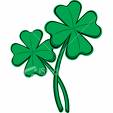 Four Leaf Clover is a renowned symbol that means good luck to the person who finds one. What do the leaves symbolize? Four Leaf Clover is a renowned symbol that means good luck to the person who finds one. What do the leaves symbolize?One leaf is for FAITH…The second for HOPE… The third is for LOVE… And the fourth for LUCK! In Irish tradition, the Shamrock or Three-leaf Clover represents the Holy Trinity: one leaf for the Father, one for the Son and one for the Holy Spirit. When a Shamrock is found with the fourth leaf, it represents God’s Grace. |
 Horseshoe – The horseshoe is considered very lucky and used to be hung in many homes to protect and attract good fortune for the family residing inside. Horseshoes were also considered lucky because they were made by blacksmiths, which is also considered a very lucky trade. Because they worked with elemental fire and magical iron, they were thought to have special powers. Horseshoe – The horseshoe is considered very lucky and used to be hung in many homes to protect and attract good fortune for the family residing inside. Horseshoes were also considered lucky because they were made by blacksmiths, which is also considered a very lucky trade. Because they worked with elemental fire and magical iron, they were thought to have special powers. |
 Lucky Rabbit’s foot – Rabbits and hares were considered very lucky animals as they were associated with spring and the return of flowers and other plants. Spring was also a time of fertility and so rabbits were considered good luck to be seen running through the fields. To see a rabbit running through your yard meant that it would be a good year to have children or that your garden would be especially fertile this year. Lucky Rabbit’s foot – Rabbits and hares were considered very lucky animals as they were associated with spring and the return of flowers and other plants. Spring was also a time of fertility and so rabbits were considered good luck to be seen running through the fields. To see a rabbit running through your yard meant that it would be a good year to have children or that your garden would be especially fertile this year.
The manner in which rabbits run gave birth to the superstition about rabbits’ feet. Apparently, their unusual stride made the back feet touch the ground ahead of their front feet, so the back feet were considered especially lucky. |
 Lucky Penny-Lots of superstitions center around money. Almost all forms of currency have at least one superstition associated with them. The most common superstition heard today, with respect to the penny, is the rhyming verse: “Find a penny, pick it up, and all day long, you’ll have good luck.” Lucky Penny-Lots of superstitions center around money. Almost all forms of currency have at least one superstition associated with them. The most common superstition heard today, with respect to the penny, is the rhyming verse: “Find a penny, pick it up, and all day long, you’ll have good luck.” |
 Wishbones have become a common tradition at Thanksgiving, Christmas and Easter dinners. The general rule is that the wishbone is saved from the turkey or chicken dinner and dried overnight. The next day, two people snap it while making a wish. Each person uses their pinky finger to pull on an end. After the bone has broken, the one with the larger bit is granted their wish. Wishbones have become a common tradition at Thanksgiving, Christmas and Easter dinners. The general rule is that the wishbone is saved from the turkey or chicken dinner and dried overnight. The next day, two people snap it while making a wish. Each person uses their pinky finger to pull on an end. After the bone has broken, the one with the larger bit is granted their wish. |
 Fu – Blessing, Good Fortune, Good Luck Fu – Blessing, Good Fortune, Good LuckFu is one of the most popular Chinese characters used in Chinese New Year. It is often posted upside down on the front door of a house or an apartment. The upside down fu means good luck came since the character for upside down in Chinese sounds the same as the character for came. |
 Lu – Prosperity Lu – ProsperityIt used to mean the official’s salary in feudal China. Fengshui is believed to be the Chinese way to health, wealth and happiness. If you are interested in Fengshui, you may check out the book ‘The Feng Shui Kit.’ |
 Shou – Longevity Shou – LongevityShou also means life, age or birthday. |
 Cai – wealth, money Cai – wealth, moneyChinese often say money can make a ghost turn a millstone. That is to say money really can do a lot of things. |
 Ji – lucky, auspicious, propitious Ji – lucky, auspicious, propitiousHope all is well. |

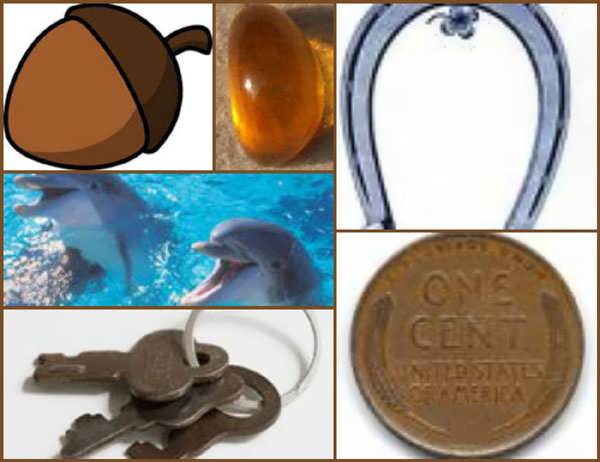

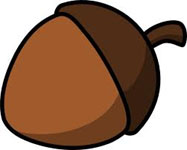 Acorn luck symbol – The acorn is considered to be an emblem of good luck, prosperity, youthfulness, and power; the acorn is a good luck symbol. The acorn may often also represent spiritual growth. The Norse believed that acorns displayed on a windowsill would protect a house from lightning. This may seem somewhat trivial to many of us today but back in the day, it was a widely accepted idea.
Acorn luck symbol – The acorn is considered to be an emblem of good luck, prosperity, youthfulness, and power; the acorn is a good luck symbol. The acorn may often also represent spiritual growth. The Norse believed that acorns displayed on a windowsill would protect a house from lightning. This may seem somewhat trivial to many of us today but back in the day, it was a widely accepted idea.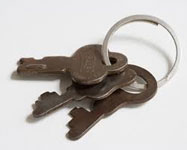 Keys – Three keys worn together symbolize the unlocking of the doors to health, wealth and love.
Keys – Three keys worn together symbolize the unlocking of the doors to health, wealth and love.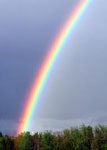 Rainbow – Rainbows are considered lucky by many people because most people know that if we find the end of the rainbow, we will find a nice big pot of gold.
Rainbow – Rainbows are considered lucky by many people because most people know that if we find the end of the rainbow, we will find a nice big pot of gold.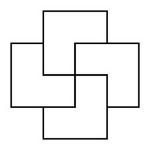 The Tursaansydan or Mursunsydan (“heart of the walrus”) is an ancient symbol used in Northern Europe. It was especially popular in Lapland. Some say it was used on Lappish shaman drums. The symbol originates from prehistoric times and incorporates a swastika.The tursaansydän was believed to bring good luck and protect from curses and was used as a decorative motif on wooden furniture and buildings in Finland. During the 18th century, the simple swastika became more popular in Finnish wood decoration than the more complex Tursaansydan.
The Tursaansydan or Mursunsydan (“heart of the walrus”) is an ancient symbol used in Northern Europe. It was especially popular in Lapland. Some say it was used on Lappish shaman drums. The symbol originates from prehistoric times and incorporates a swastika.The tursaansydän was believed to bring good luck and protect from curses and was used as a decorative motif on wooden furniture and buildings in Finland. During the 18th century, the simple swastika became more popular in Finnish wood decoration than the more complex Tursaansydan. Dolphins are considered lucky by many peoples around the world, including the Ancient cultures of Greece, Sumer, Egypt, and Rome. For Christians and Native Americans, the dolphin is a symbol of protection, and its image is said to bring good luck. The belief comes from the known fact that ancient sailors who spent several months or years away from land found seeing dolphins swimming around their ships to be the first clear sign that land was near.
Dolphins are considered lucky by many peoples around the world, including the Ancient cultures of Greece, Sumer, Egypt, and Rome. For Christians and Native Americans, the dolphin is a symbol of protection, and its image is said to bring good luck. The belief comes from the known fact that ancient sailors who spent several months or years away from land found seeing dolphins swimming around their ships to be the first clear sign that land was near. Feathers are an ancient charm for bringing good luck, representing the soul’s journey to the other realm.
Feathers are an ancient charm for bringing good luck, representing the soul’s journey to the other realm. Tigers have long been considered lucky in Chinese astrology. The tiger is also considered a protector against several evils, including being robbed and fired.
Tigers have long been considered lucky in Chinese astrology. The tiger is also considered a protector against several evils, including being robbed and fired.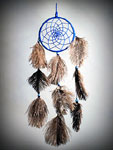 Dreamcatchers, from the Native American culture, are considered to be good luck symbols because they catch the negative parts of our dreams.
Dreamcatchers, from the Native American culture, are considered to be good luck symbols because they catch the negative parts of our dreams.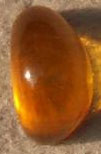 Amber – strengthens the aura and also balances the yin and yang. It attracts compassion, protects against evil influences and accidental injury and brings good luck.
Amber – strengthens the aura and also balances the yin and yang. It attracts compassion, protects against evil influences and accidental injury and brings good luck. Hand – The Hand has been a good luck symbol in a number of cultures all over the world, including the Incas, Native Americans, Israelis, Greeks, and Arabs. Charms shaped like the human hand have been considered to be very potent heralds of good fortune. The symbol is seen as representative of domination, strength, protection and spiritual power. Ancient Europeans believed that holding hands up could protect against the evil eye (leading to the popular adage ‘talk to my hand’). In Islam, The Hand of Fatima (daughter of Muhammad) is a good luck charm, with the five fingers symbolic of faith, pilgrimage, prayer, fasting, and charity. The Jews believe that The Hand of Miriam’s charm would bring good fortune to the wearer.
Hand – The Hand has been a good luck symbol in a number of cultures all over the world, including the Incas, Native Americans, Israelis, Greeks, and Arabs. Charms shaped like the human hand have been considered to be very potent heralds of good fortune. The symbol is seen as representative of domination, strength, protection and spiritual power. Ancient Europeans believed that holding hands up could protect against the evil eye (leading to the popular adage ‘talk to my hand’). In Islam, The Hand of Fatima (daughter of Muhammad) is a good luck charm, with the five fingers symbolic of faith, pilgrimage, prayer, fasting, and charity. The Jews believe that The Hand of Miriam’s charm would bring good fortune to the wearer. Ladybug Ladybug is a universal emblem of good luck, and different cultures worldwide have long considered it to be a harbinger of prosperity. It is believed that landing of a live ladybug on you or wearing a ladybug talisman will free you from all problems and make your wishes come true. Moreover, it is said that bad luck befalls the one who kills a ladybug.In the days of yore, farmers especially regarded the ladybug as a lucky omen and symbol of protection because it helped control the harmful pest population.
Ladybug Ladybug is a universal emblem of good luck, and different cultures worldwide have long considered it to be a harbinger of prosperity. It is believed that landing of a live ladybug on you or wearing a ladybug talisman will free you from all problems and make your wishes come true. Moreover, it is said that bad luck befalls the one who kills a ladybug.In the days of yore, farmers especially regarded the ladybug as a lucky omen and symbol of protection because it helped control the harmful pest population.